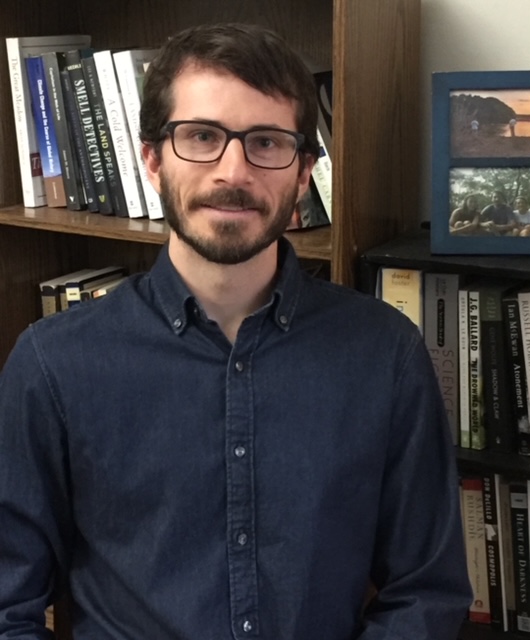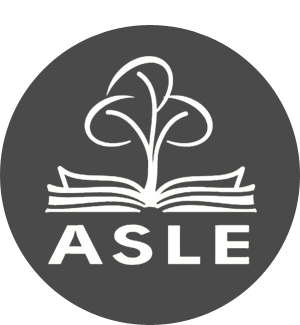ASLE’s Scholar of the Month for September 2022 is Andrew Bishop.
 Andrew Bishop is currently a PhD candidate at The Ohio State University. He is working on a dissertation that explores representations of leisure in nineteenth-century American literature and culture. He has written ecocritical articles on authors like Arthur Miller, H.G. Wells, and Ernest Hemingway. Prior to pursuing his PhD, he helped to coordinate the Composition program at Hudson County Community College in Jersey City, NJ.
Andrew Bishop is currently a PhD candidate at The Ohio State University. He is working on a dissertation that explores representations of leisure in nineteenth-century American literature and culture. He has written ecocritical articles on authors like Arthur Miller, H.G. Wells, and Ernest Hemingway. Prior to pursuing his PhD, he helped to coordinate the Composition program at Hudson County Community College in Jersey City, NJ.
How did you become interested in studying ecocriticism and/or the environmental humanities?
I’d never seriously thought about representations of nature – the bread and butter of early ecocriticism – until reading Bill McKibben’s The End of Nature and William’s Cronon’s essay “The Trouble with Wilderness.” These works made me want to learn more about the cultural lives of nature, the various ways that nature is defined and comes to life in literary and other kinds of texts. How do scientific, economic, and other developments shape these definitions and figurations of nature? What kinds of cultural, political, or environmental work are these definitions and figurations performing? McKibben and Cronon inspired me to ask these questions. I started to find some answers in the first anthology of ecocritical essays, The Ecocriticism Reader: Landmarks in Literary Ecology. At that time I was living in New York City, working as an after-school tutor and a community college writing instructor. I remember reading snippets of The Ecocriticism Reader during my subway rides to work. I guess at that point I was officially an ecocritic.
Who is your favorite environmental artist, writer, or filmmaker? Or what is your favorite environmental text? Why?
It’s hard to pick favorites, but I certainly have a special place in my heart for Ursula K. Le Guin, especially for her short story “The Ones Who Walk Away from Omelas.” “Short story” probably isn’t an adequate genre term for this fictional historical narrative, thought experiment, and imaginative urban environmental project all bundled into one. Whatever it is, “The Ones Who Walk Away from Omelas” offers (and in no more than about four pages) such a fascinating study of the conditions that make possible belief – or, negatively put, of the assumptions that function to limit our collective imaginative powers and legitimize violence. I think in an era in which so much environmental and social violence is made invisible by (or deemed inevitable because of) the imperatives of our economic system, literary texts like “The Ones Who Walk Away from Omelas” are precisely what we should be reading and analyzing with our students.
What are you currently working on?
I’m working on a dissertation chapter that explores the conceptualization and legitimization of leisure in the middle of the nineteenth century in the US. This was the era in which, because of technological and organizational changes in the nature of work and the movements for a shorter working day that these changes provoked, ordinary working people began to acquire regularly scheduled, clearly defined segments of free time – “leisure” as we have come to know it. This was also the era in which, amongst different factions within the bourgeoisie, there were heated debates concerning leisure – concerning, for instance, the legitimate uses of leisure, the permissible motives for consuming particular leisure activities, and the proper relation of noncommercial authorities (the church and the state) to leisure and social life more generally.
In the chapter, I’m focusing on the important role that aesthetic ideals – like the concept of “culture” – played in these debates. Some participants believed that the realization of “culture” would require radical changes at the level of economic production and rejected or embraced the ideal of “culture” for this reason. Other participants celebrated the importance of “culture” – and the importance of leisure in helping people to realize “culture” – without seriously considering the issue of economic production at all. Their implicit assumption was that the realization of “culture” was consistent with alienation in the economic sphere. My sense is that the latter view won out: we live in a society defined by compartmentalization, one compartment (labor) for alienated economic activity and another compartment (leisure) for aesthetic enrichment. I hope that my project can help us to better understand the history of how this division emerged and some of this division’s damaging social and environmental consequences.
What is something you are reading right now (environmental humanities-related or otherwise) that inspires you, either personally or professionally? Comment briefly on why or how it inspires you.
I’ve been reading Richard Bushman’s The Refinement of America: Persons, Houses, and Cities. The book isn’t new; it came out in 1992. But I just stumbled upon it, and I’m so glad I did. The book is such a fascinating study of the history of cultural change. I really appreciate the sensitivity and creativity with which Bushman handles the wide range of artifacts he studies. Some of these artifacts (clothes, dinner utensils, furniture etc.) are ostensibly pretty ordinary. But with the help of these ostensibly ordinary objects Bushman is able to tell a remarkably complex and engaging story, a kind of uneasy but passionate multiple-century-spanning love affair involving the American bourgeoisie and genteel culture.
Is there a scholar in the field who inspires you? Why?
Here, too, it’s hard to pick favorites, but I immediately think of Jason W. Moore. His book Capitalism in the Web of Life forever altered the way I think about how value is defined and produced under capitalism and the environmental consequences of defining and producing value in this way. Capitalism in the Web of Life helped to confirm the urgent need for an environmentally-oriented critique of capitalism and continues to inform directly or indirectly a lot of the writing I do.
